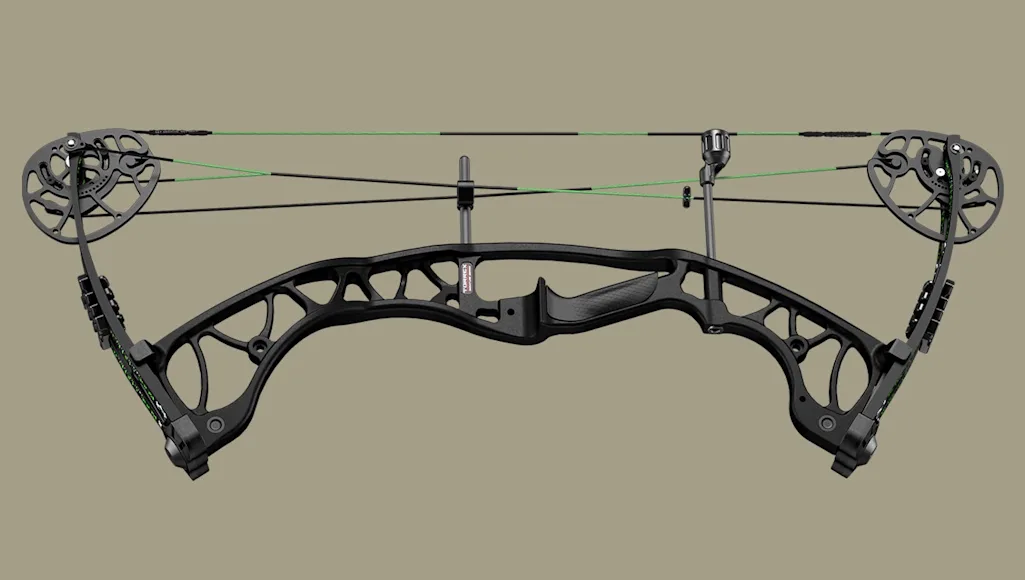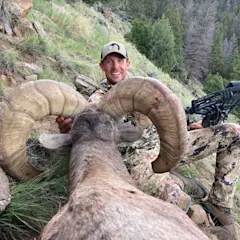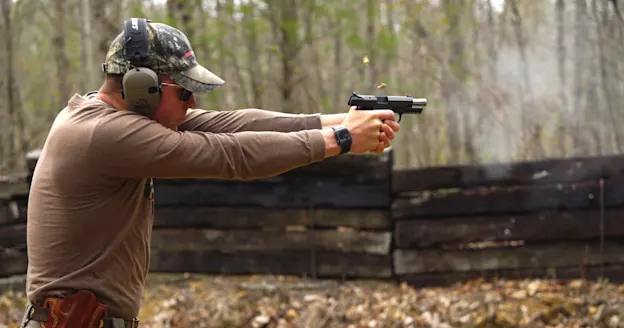We may earn revenue from the products available on this page and participate in affiliate programs. Learn more ›
There are plenty of good budget bows on the market, but if you’re a serious archer who wants true flagship-bow performance, plus a discount, you should be looking for a “tweener” bow—that is, a midline model that sells between roughly $600 and $800. I call these tweeners because they aren’t sold as flagship models, and they aren’t true budget bows either. They’re right in between—and the best tweener bow I’ve shot in quite some time is Hoyt’s new Torrex, which is available with a ready-for-the-woods accessory package.
Hoyt Torrex
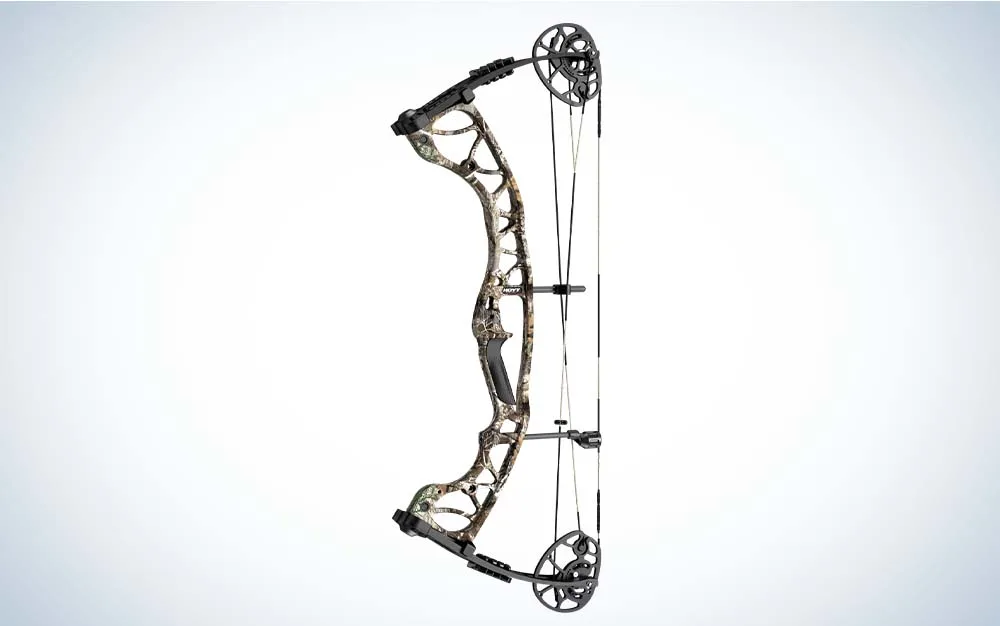
Hoyt Torrex Specs
Advertised ATA Speed: 327 fps
Axle-to-Axle Length: 30-3/4 inches
Brace Height: 7 inches
Weight: 3.8 pounds
Peak Draw Weights: 40, 50, 60, 65, and 70 pounds
Draw Length: 26-30 inches
Available Colors: Realtree Edge, Black Out, Black Out Keep Hammering, Black Out Bone Collector, Realtree Edge Bone Collector
Setting Up the Hoyt Torrex
The Torrex didn’t click, pop, or creak when pressed, as some budget bows do, and mounting the included accessories was straightforward. More to come on these. The next thing I did was secure the X-Act grip system, which I’m a big fan of and was pleased to see included with the Torrex. Grip attachment is easy. You just remove the tab on the riser sticker, slide the grip in, and press down firmly. This X-Act grip has a thin throat, a flat back, and is perfectly angled. It feels great in hand, and the company says that years of testing have proven that it promotes repeatable hand placement.

Hoyt’s X-Act grip installed on the Torrex. Hoyt
My rig arrived fitted with the Cam & 1/2 Torrex TRX 3 TR cams, which are adjustable without a bow press in 1/2-inch increments between 26 and 30 inches. The bow was set at a 28-inch draw, and the only requirement to change the draw setting was to remove four hex screws—two in the top cam and two in the bottom—and rotate the modules. Anyone can do this.
With the limb screws turned all the way in, I measure that draw weight on a digital draw scale at 70.30 pounds, and let-off was 80 percent. Draw weight is adjustable down 10 pounds from peak weight per the owner’s manual instructions. With my nocking points tied in and D-loop attached, I installed my peep sight and was ready to start shooting. It all went without a hitch.
The Hoyt Torrex on the Range

The author shoots a group at 60 yards with the Torrex. Jace Bauserman
Initially, my goal was to just ensure the bow was sending arrow downrange reasonably well, with no major tuning modifications needed. A quick slide of the included QAD Hunter UltraRest to the right and a slight move up in elevation on the Fuse ProFire 5-Pin sight put me close enough at 20 yards. Now it was time to start fine-tuning and paying attention to how good or bad this tweener actually is.
I found the draw-cycle to be very smooth, with the cams rolling over and letting-off gently. The cable stops, which are padded arms on the cam module that contact the inner cable, give just the sort of back-wall feel I like, which is not too spongy but also not limb-stop hard. This compound has a great back wall, and you need to feel it to appreciate it fully. It allows you to settle into the anchor and push hard into the riser while feeling a slight give as you drive the release elbow back. The valley promotes a crisp release and helps you focus on execution. The cam’s aren’t itching to unleash fury, which adds to the bow’s sweet-shooting nature. The grip, draw cycle, and valley promote the type of feel and accuracy you’d expect in a flagship bow.

The Torrex’s Cam & 1/2 System produces a smooth draw cycle. Hoyt
There is some slight vibration at the shot, but nothing major. You’ll feel a little hand tickle, more than you’d find in Hoyt’s RX-7 or Ventum Pro, but it’s minimal. Noise, on the other hand, is nill. The bow feels balanced at full draw for a rig that measures just a tick under 31 inches axle-to-axle, and I love the 3.8-pound (without accessories) weight. You can keep the bow super light, which will make it maneuverable in the backcountry and in a whitetail stand. Or you can heavy it up if you want by adding a different front stabilizer and back bar.
For this review, I wanted to test the bow with its included accessories. I’ve already noted that the bow tuned up easily. After shooting 200 arrows through the Torrex, and getting a good feel for it, I paper-tuned it to perfection with just a few twists of the split-yoke system and some minor vertical adjustment of the included QAD Hunter UltraRest. The sight is a simple five-pin, and windage and elevation adjustments are manageable via a pair of set screws. Of course, you can move each pin by loosening and tightening individual pin screws. The sight is basic but is durable and bright, and the five-inch FlexTorch stabilizer is more for vibration and noise control than balance. It serves its purpose and performs well. Other included accessories are Fuse’s Maxxis 4-Arrow Quiver and Hoyt Wrist Strap.
Hoyt Torrex Range Accuracy
From 20 to 60 yards, the bow performed like any top-tier flagship. If I did my job, the bow did its job. The farther I moved back from the target, the more I appreciated the stability of the Tec-Lite Riser and the wide limb pockets. The bow sits amazingly in the hand and is fun to shoot, promoting good accuracy. For the sake of testing, I shot a 5-Spot NFAA 300 round from 20 yards and scored a 296 with 42 Xs. I conducted my 60 yard test with with SEVR Match Grade Field Points, SEVR 1.5 mechanical broadheads, and QAD Exodus fixed-blade broadheads. The SEVR Match Grade Field Points and 1.5-inch mechanicals hit right together, and more than once, I had six arrows, three tipped with field points and three tipped with mechanical heads, inside a two-inch circle at 60 yards. The Exodus fixed-blade heads hit 2.23 inches right, and .75-inches low of the field points and mechanicals at 50 and 60 yards, but all that was required was a quick sight adjustment, and I was punching the Exodus heads perfectly in foam.
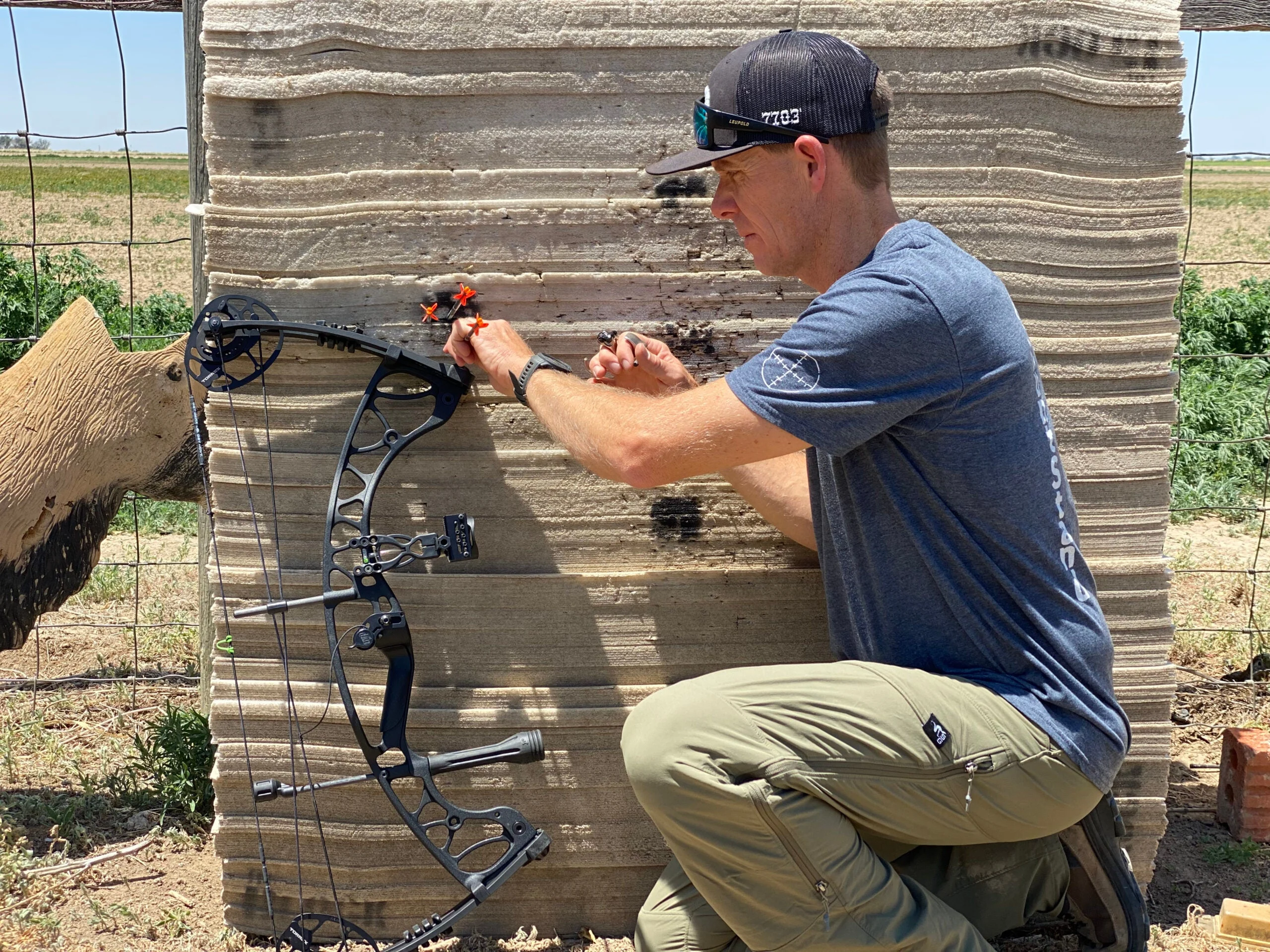
The author pulls a nice group of arrows shot from the Torrex at 60 yards. Jace Bauserman
The bow’s 7-inch brace height helps with its accurate, forgiving nature, but there’s more at work than just the brace height. The high-tolerance limb pockets, Tec-Lite riser, and Cam & 1/2 System play a huge role in the bow’s ability to put arrows on the mark. These technologies have been staples in Hoyt’s lineup for years. All have been used on flagship models at some point, and I love it when a manufacturer adds top-tier tech to a bow with a friendly price tag.
The bow’s speed is impressive—287 fps with a 29-inch draw length, draw weight of 70.30 pounds, and firing an arrow with a finished weight of 407.3 grains. When calculated, that gives the setup 74.43 pounds of kinetic energy, which is more than enough for pass-through shots on any North American big-game species.
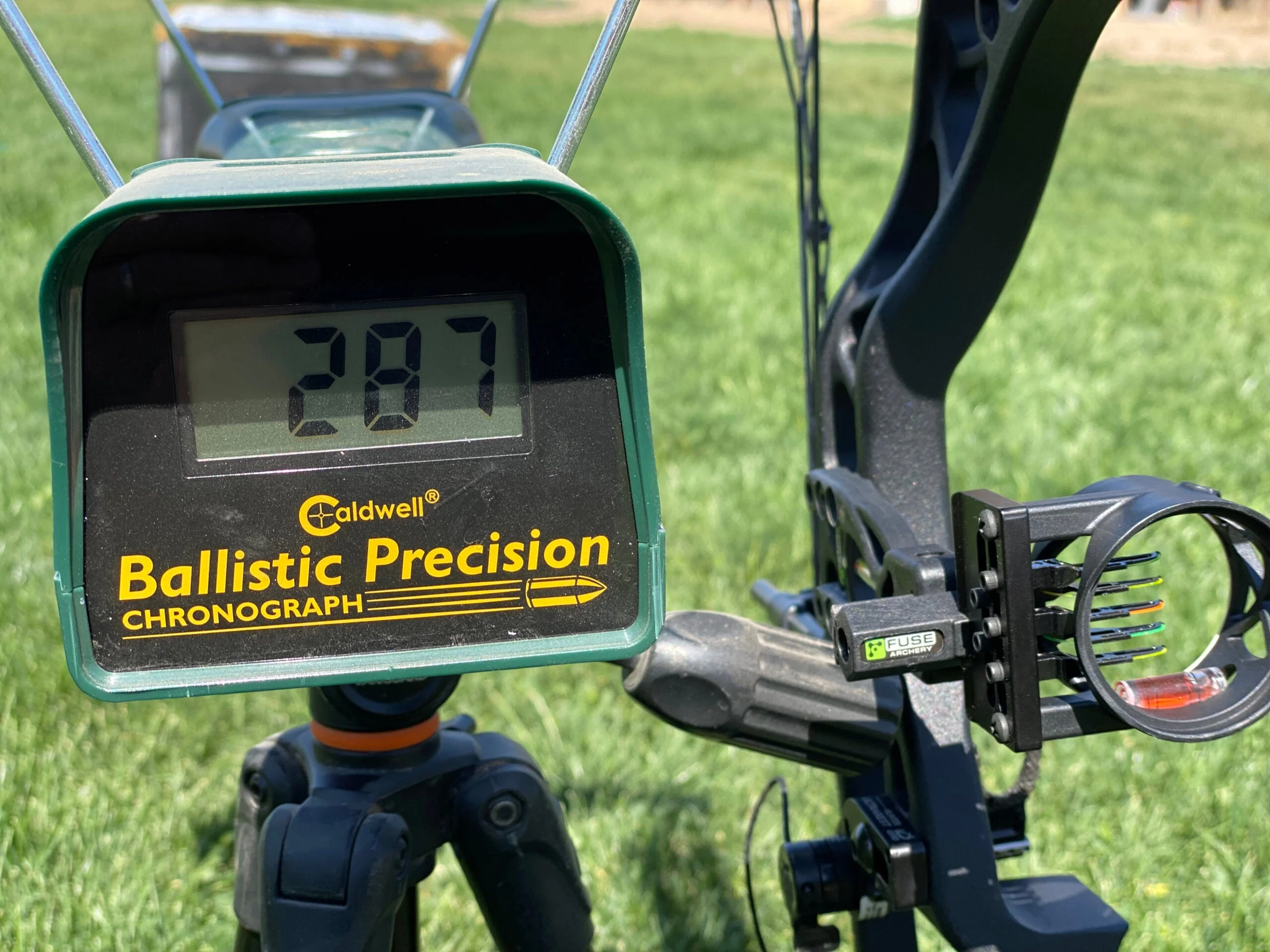
Set up for the author’s specs, the Torrex registered 287 fps on his chronograph. Jace Bauserman
I agree with Hoyt’s tagline for this bow: Everything you need. Nothing you don’t. For right around $800, you can be tearing up the woods with a bow that’s accurate, durable, and plain fun to shoot. There are no tricks or gimmicks. The Torrex is just loaded with proven technologies that won’t disappoint you.
Testing Gear Used
Bow Press: Last Chance Archery EZ Press Deluxe
Chronograph: Caldwell Ballistic Precision
Digital Bow Scale: Luoyer
Digital Arrow Scale: Hornady GS-1500
Field Point: 100-Grain SEVER Match Grade
Mechanical Broadhead: 100-Grain SEVER 1.5
Fixed Broadhead: 100-Grain QAD Exodus

